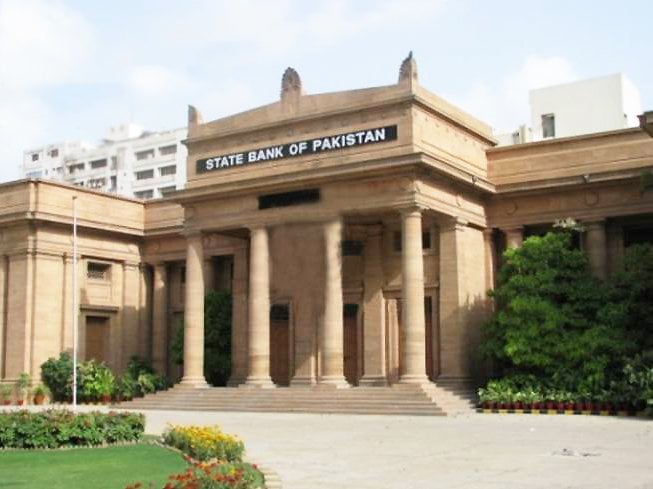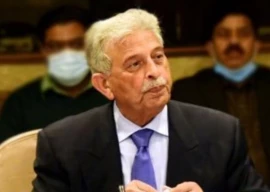
In a standard setting, a central bank performs the unique function of regulating the financial system. It plays the crucial role of designing and implementing monetary and fiscal policies. Any absence of, or weakness in these policies can cost a financial system its stability.
Every action or inaction on part of the central bank influences interactions between the different players in a financial market, and hence affects their individual and collective vulnerability to crisis. In fact, the role of a central bank is further highlighted especially after the onset of a global financial crisis.
Today, post the 2008 global financial crisis, calls for financial reform have centred on rethinking the role of central banks and taking full stock of the events that led to their historical evolution. In our part of the world, the State Bank of Pakistan and the Bangladesh Bank trace their legal foundations to the Reserve Bank of India (RBI) Act, 1935. Let us step back in history and see how central banks evolved as an institution in the subcontinent.
Winston Churchill once said: “We shape our buildings; thereafter, our buildings shape us.” Knowing history is important if we wish to comprehend where we are coming from and how we can further improve the state of the world we live in today. Having outlined the history of central banks for the subcontinent, understanding how sacred it is for the stability of all respective economies concerned is imperative for policymakers, who should work towards continuously reforming it with the changing times.
Early Indian Financial system
Indigenous Money Lenders
These included the Shroffs, Marwaris and the Banias
Presidency Banks
Bank of Bengal: established 1806
Bank of Bombay: established 1840
Bank of Madras: established 1843
These banks were initially constituted as quasi-state institutions and had the privilege of being the banker’s banks.
However, by 1876, they evolved more as private concerns, following the collapse of the Bank of Bombay eight years earlier in 1868. Even after becoming private concerns, the Presidency Banks retained a semblance of their official character – they published a weekly statement of affairs, and other banks kept a certain part of their cash deposits with them.
Indian Joint Stock Banks
The second constituent of the financial system were the Exchange Banks. These banks had access to the London Money Market and dealt in foreign exchange.
Exchange Banks
The third important foundation of banking in India comprised the Indian Joint Stock Banks. The impetus to the formation of joint stock banks was given in 1813, when an Act was passed removing several of the restrictions regarding the settlement of Europeans in India. Joint stock banking entered a boom in India in 1906 due to the Swadeshi movement, when numerous indigenous banks were created following the partition of Bengal.
Given this financial structure, how did the Indian financial system move to the creation of the Reserve Bank of India?
The financial structure as present at that time had many flaws. For one, the Presidency Banks acted as private concerns as well as banker’s banks. This created an anomaly in the system, as they did not minimise the information asymmetry between different financial market players, nor did they operate on the non-profit principal.
It is an established fact that a central bank is necessary to act as a lender of last resort in order to minimise the cost of information asymmetry in the market. Moreover, central banks cannot be operated on the principle of profit maximisation, as this would lead to a conflict of interest between it and other players in the financial system. Moreover, historians have noted that due to nearly all components of the financial system being purely ‘private’ or ‘market’ players, a lack of cooperation existed between the Indian Banks themselves, or between them and the English Banks. Due to the absence of any regulator or state functionary, there was an overarching presence of a market in which all players were fighting to retain business for their survival. As a case in point, the Exchange Banks were against the Presidency Banks, for fear of the latter’s dealing in foreign exchange. The inherent flaws in this system invited a crisis. This was accurately predicted by John Maynard Keynes in 1913, during his tenure at The Royal Commission of Indian Currency and Finance. The crisis was triggered by the failure of The People’s Bank of India, Lahore, which led to a major contagion that resulted in the collapse of 88 banks during 1913-1917.
The failure of these banks and the wiping out of a significant amount of capital, especially of Indian Joint Stock banks, led to the widespread opinion that a proper institutional framework was needed as a panacea for the problems of the financial sector. This eventually led to the merger of the three Presidency Banks into the Imperial Bank of India in 1920. The Imperial Bank of India was proposed as an institution with overall – as opposed to territorial – presence in India.
From its inception, the Imperial Bank of India had the status of a quasi-central bank, which undertook banking functions and managed the rupee debt of the government until the formation of the RBI in 1935. After the creation of RBI, the Imperial Bank acted as its agent – a structure still followed after the partition of India, before the State Bank of Pakistan was finally formed in 1948.
Published in The Express Tribune, June 24th, 2013.
Like Business on Facebook, follow @TribuneBiz on Twitter to stay informed and join in the conversation.
COMMENTS (2)
Comments are moderated and generally will be posted if they are on-topic and not abusive.
For more information, please see our Comments FAQ


































1714024018-0/ModiLara-(1)1714024018-0-270x192.webp)









How many foreigners were made Governor of State Bank of Pakistan?
good piece Tehreem!